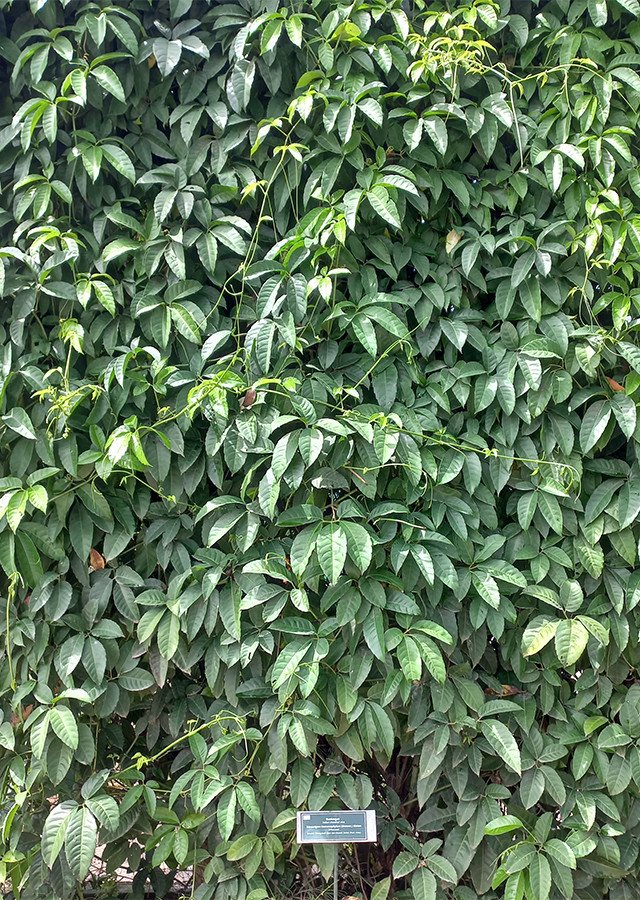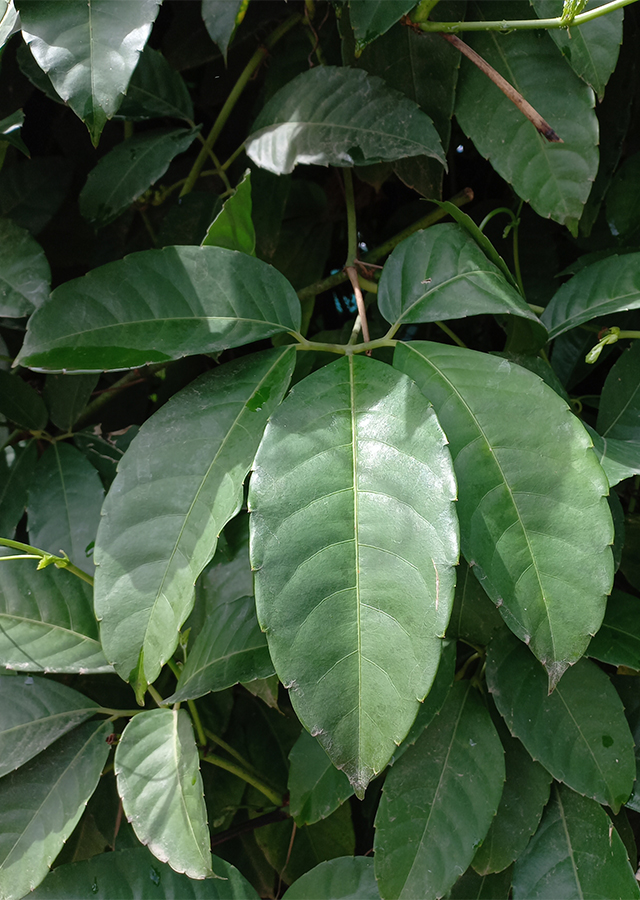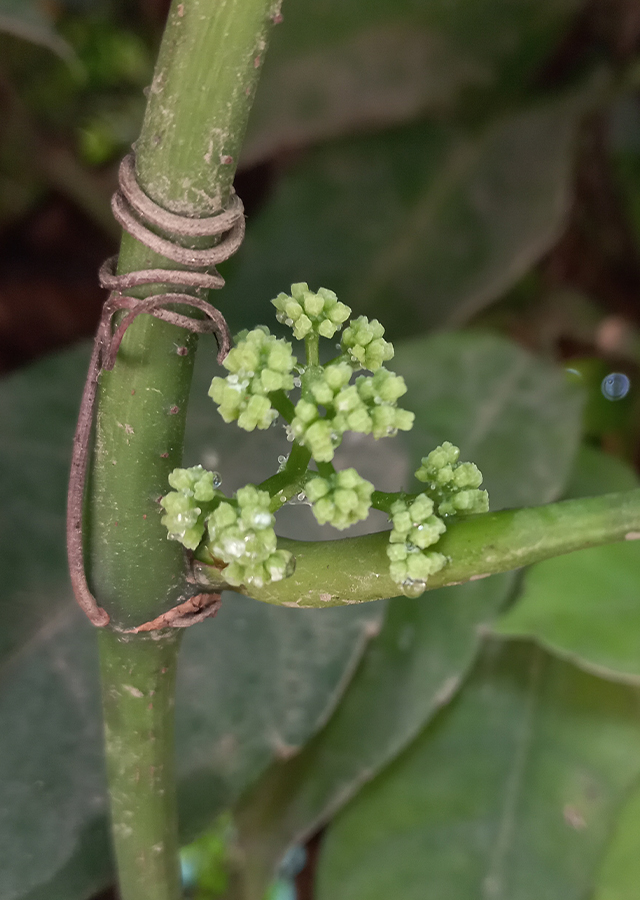Traditional Herbs from Tetrastigma leucostaphylum
boils
- Prepare enough fresh bull leaves, wash them until clean.
- Crush them until they become a paste.
- Apply the leaf paste on the boils.
radang_vagina
- Take enough fresh bull leaves, wash them until clean .
- Crush it until it becomes a paste.
- Apply the leaf paste on the inflamed vagina.
What is Tetrastigma leucostaphylum Looks like??



Parts of Tetrastigma leucostaphylum that could be used
- Leaves
- Roots
Tetrastigma leucostaphylum Distribution
Bantengan is a climbing plant whose natural distribution covers the countries of Bangladesh, Bhutan, India, Nepal, Sri Lanka, Cambodia, Laos, Myanmar, Vietnam, Thailand, the Malay Peninsula, Indonesia (Java, Sumatra). This species is the sole host for parasitic plants from the Raffesiaceae family. For the people of Bangladesh,bullan is a popular plant and is very valuable as a traditional medicine. The people of the Chakma and Tripura tribes often use this plant, especially the leaves, to treat various diseases, one of which is to treat diarrhea, and the Marma tribe has also used it to treat tumors. Meanwhile, in Indonesia, especially the Mamak tribe in Talang, Bukit Tigapuluh, Riau Province,bullan leaves have also been used to reduce fever.Agroecology of Tetrastigma leucostaphylum
Bantengan can be found growing in several types of habitat, from secondary forests, on the edges of primary forests, rocky cliffs, dense limestone forests, river banks, highland forests, to lowland forests in Sumatra.
Morphology of Tetrastigma leucostaphylum
- Stems round when young, up to 4 cm in diameter, flat, tendrils bifurcated, woody, rough, striated, prominent lenticels, have sturdy tendrils.
- Compound leaves, consisting of 3-7 foliolates, oval-lanceolate shape, pointed base, pointed leaf tips, serrated edges, glabrous, there are 8-10 pairs of secondary veins, fine veins (not conspicuous), leaves opposite, slightly winged on the lower surface, green.
- Flowers are hairy, have 4 petals. The corolla is 4, green to whitish green, oval in shape, thickened at the apical part, 4 stamens, 4-lobed stigma and large, pistil has a cone-shaped ovary , pistil stalk (style) short, ciliated. Flowers on short stems up to 4 cm, dark brown, cork. Inflorescences in the form of cymes (umbrellas) that grow in the leaf axils oval-shaped, light green or whitish green when young, turns orange when ripe, 15-20 mm in diameter, fleshy, 1-2 seeds per fruit
- Seeds are oval, concave on the surface, wrinkled transversely." ]
Cultivation of Tetrastigma leucostaphylum
Propagation is done generatively using seeds.
Tetrastigma leucostaphylum, more details :
Chemical Content of Tetrastigma leucostaphylum
Steroids, alkaloids, tannins, flavonoids, cardiac glycoside, diterpenes, phytosterols, saponins.
Benefits of Tetrastigma leucostaphylum
Treats diarrhea and dysentery, vaginal inflammation, coughs, boils, ulcers, stomach ache, tumors, gout, edema, tetanus and paratyphoid (infection caused by Salmonella parathyphi bacteria), reduces fever. Has anti-inflammatory and anthelmintic activity.
Simplisia of Tetrastigma leucostaphylum
Another Facts for Tetrastigma leucostaphylum :
Synonym of Tetrastigma leucostaphylum
Cissus dioica Roxb. ex DC., Cissus feminea Roxb., Tetrastigma lanceolarium Planch.
Habitus of Tetrastigma leucostaphylum
Creepers. Vines, large lianas, climb using tendrils.
Habitat of Tetrastigma leucostaphylum
- Riverside", "Forest", "Rocky Area", "Land
No comments:
Post a Comment